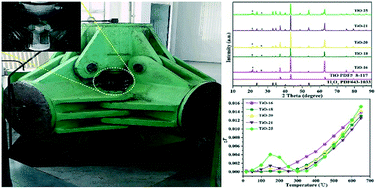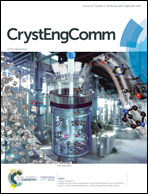Pressure-induced thermoelectric properties of strongly reduced titanium oxides†
Abstract
The poor electrical conductivity of titanium oxide is a chief hurdle against the enhancement of its thermoelectric properties and increasing its reduction degree is an effective way for advancing its electrical conductivity. Strongly reduced titanium oxides, however, are rarely investigated for their thermoelectric properties so far. Here they were successfully synthesized by the efficient high-pressure and high-temperature (HPHT) method and the first systematic investigations about their thermoelectric properties were conducted. It was revealed that the samples were composed of phases TiO and Ti2O3. The high-pressure modulated morphologies were complicated and the microstructures were rich in lattice defects and nanoscale grains, the characteristics of pressure-modulated samples. Consequently, the electrical resistivity was greatly suppressed compared with that of other semiconductors and the changes in the conducting types of the samples with measurement-temperature were diverse, p → n or n → p → n or n-type all the time. Besides, the common Lorentz number was no longer applicable. The modulation by high-pressure is responsible for these. This work provides prospective strategies about upgrading the thermoelectric properties of titanium oxides under HPHT.



 Please wait while we load your content...
Please wait while we load your content...